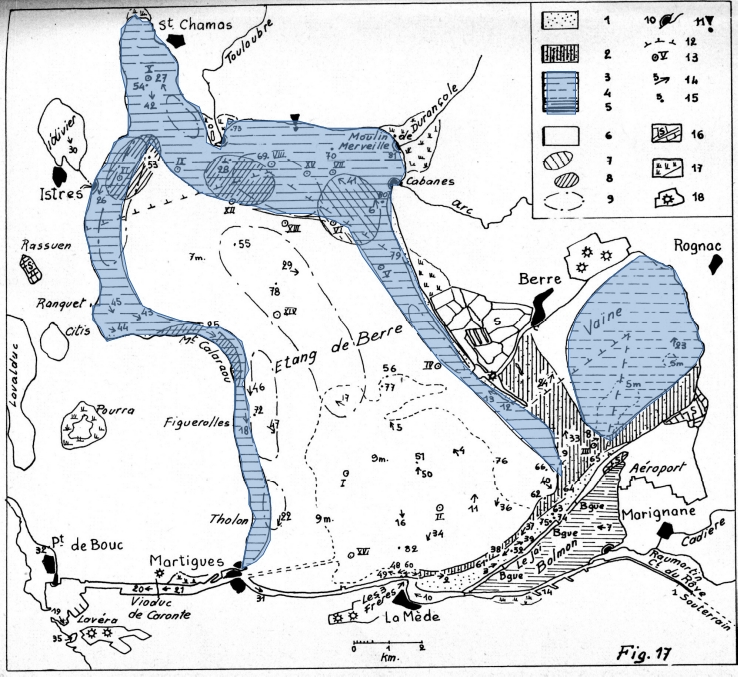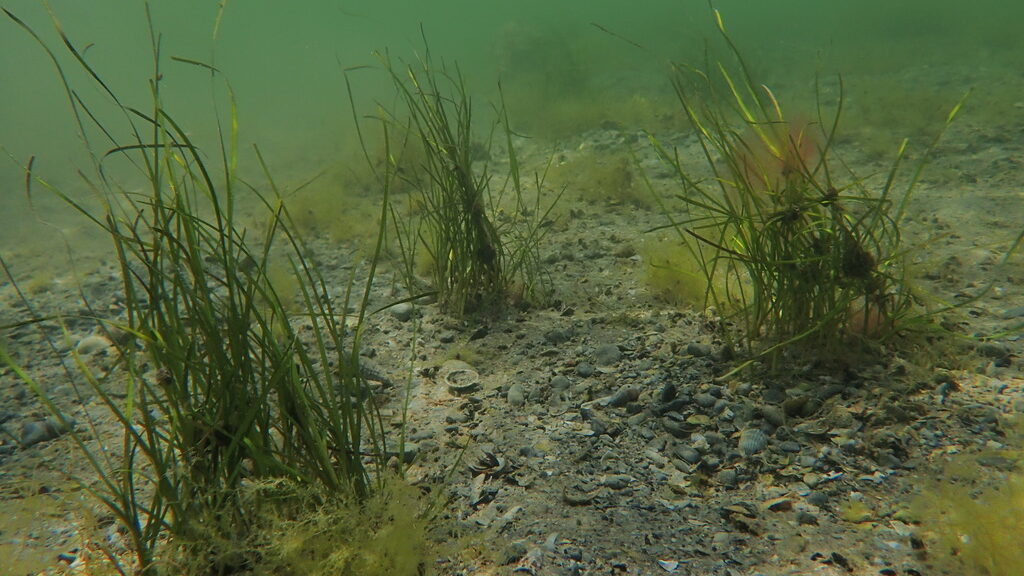The Berre lagoon (Étang de Berre) is the largest of the French Mediterranean lagoons at 155.3 km2. Prior to the 1960s the Berre lagoon was home to over 6000 ha of mixed seagrass (with Zostera marina the dominant species). However, installation of a hydroelectric powerplant in 1966 transformed the lagoons ecology (with up to 6 billion m3 of freshwater entering the lagoon per year), and by 2009 just 1.2 ha of seagrass remained.

After significant reductions in freshwater input over the last two decades, first following freshwater discharges being limited to 1.2 billion m³ per year in 2004 (following a ruling against France by the European Court of Justice), and more recently an agreement reached by for better management of freshwater discharges in 2024. There is now a trajectory of recovery for Nanozostera noltii in the lagoon.
Today several Nanozostera noltii meadows and numerous small patches can be found around the edge of the lagoon, and yearly monitoring of the surface area by remote sensing at GIPREB reveal a positive trend for this species.
2020: 8.2ha
2021: 14.7ha
2022: 25.2ha
2023: 42.6ha
2024: 59.2ha
Context.
The productive Étang de Berre has been supporting local communities since Roman times. However, the seascape has been severely degraded in the past 60 years, losing both its natural resources and ecological value.
The opportunity for restoration in this lagoon is enormous; with over 6.000ha of historic seagrass area alone. In addition a number of other previously present species are being considered by local NGO ‘8 Vies pour la planète‘ for active restoration into the Étang de Berre.
Vision.
On a local level, there is a great public demand for restorative action in the Étang de Berre, with the State having called upon GIPREB and the Port of Marseille to ‘clean up, rehabilitate, and restore the lagoon’ (2011).
The restoration target 1,500ha of mixed seagrass meadows (Cymodocea nodosa, Zostera marina and Nanozostera noltii) is the target set by the la directive-cadre sur l’eau (DCE), which represent a translation of the targets set by the Water Framework Directive (WFD).

Since 2021, and the start of the UN Decade on Ecosystem Restoration, a citizen-led project (the ZoRRO project) has been reintroducing Zostera marina back into the lagoon. The ZoRRO project employs both rhizomes-based and seed-based restoration techniques. Thanks to their efforts, currently over twenty patches of Zostera marina (each > 0.25 m2) now exist within the lagoon (see YouTube video here).
Following this, in 2024 (after GIPREB had secured an agreement for the better management of freshwater discharges), GIPREB launched Projet ReHAB.
Most recently, in January 2025, the ZoRRO project together with GIPREB, planted some additional Zostera marina seeds in the lagoon (watch the La Provence YouTube video here).
#GenerationRestoration is certainly alive and well in the Étang de Berre!
